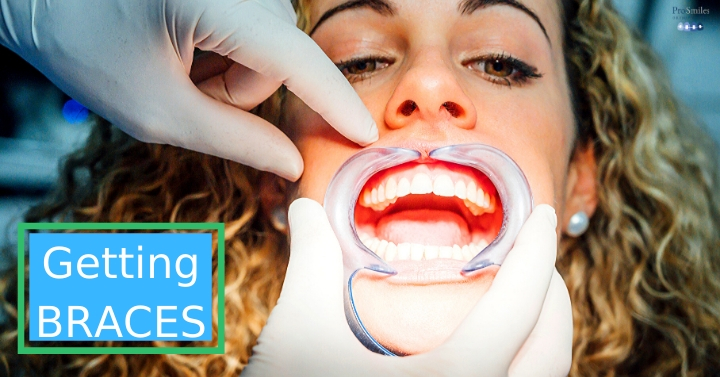5 Simple Techniques For Legacy Orthodontics
Table of ContentsMore About Legacy OrthodonticsHow Legacy Orthodontics can Save You Time, Stress, and Money.Legacy Orthodontics - An OverviewThe smart Trick of Legacy Orthodontics That Nobody is Talking AboutHow Legacy Orthodontics can Save You Time, Stress, and Money.
At Advanced Orthodontics, we give patients with a all natural therapy experience. On top of that, we provide flexible treatment routines, flexible payment options and an enjoyable, enjoyable experience. leesburg clear braces. Telephone call ( 480) 357-4900 today for more details and timetable a consultation.An orthodontist is a dentist educated to identify, prevent, and deal with teeth and jaw irregularities. Orthodontists function with individuals of all ages, from children to adults.
Malocclusion, or misaligned teeth, can cause oral problems, including tooth decay, periodontal illness, and tough or excruciating chewing. However not everybody is born with straight teeth. If you have a bad bite or big rooms between your teeth, you might intend to seek advice from a dental professional specializing in orthodontic care.
The 45-Second Trick For Legacy Orthodontics
( Photo Debt: DigitalVision/Getty Images) Orthodontists make use of repaired and detachable oral devices, like braces, retainers, and bands, to alter the position of teeth in your mouth. Orthodontic treatment is for oral abnormalities, consisting of: Crooked teethBite troubles, like an overbite or an underbiteCrowded teeth or teeth that are as well much apartJaw misalignmentThe goal of orthodontic treatment is to enhance your bite.
While you might believe of orthodontists as mostly for youngsters or teens who require dental braces, they can correct dental problems at any type of age. Orthodontists participate in university, oral college, and orthodontic school.
, but not all dental professionals are orthodontists. They concentrate on 2 areas: Just how to effectively and securely relocate teeth Just how to properly direct development in the teeth, jaw, and faceOnce an orthodontist has finished training, they have the choice to become board certified.
Top Guidelines Of Legacy Orthodontics
Misalignment, or malocclusion, is one of the most typical reason individuals see an orthodontist. It is hereditary and is the result of dimension distinctions in between the upper and lower jaw or in between the jaw and teeth. Malocclusion results in tooth congestion, an askew jaw, or uneven bite patterns. Malocclusion is typically treated with: Your orthodontist attaches metal, ceramic, or plastic square bonds to your teeth.
If you have just small malocclusion, you may have the ability to utilize clear braces, called aligners, rather than typical dental braces (https://www.openlearning.com/u/brianmccune-skmowy/). Some individuals require a headgear to help move teeth right into line with pressure from outside the mouth. After braces or aligners, you'll need to use a retainer. A retainer is a customized gadget that maintains your teeth in position.
They're most often used on kids. They can produce extra area in the mouth without having to draw teeth. If you have a severe underbite or overbite, you may need orthognathic surgical treatment (also called orthodontic surgery) to extend or reduce your jaw. Orthodontists make use of wires, medical screws, or plates to sustain your jaw bone.
You might require to see an orthodontist if you have: Crowding or not enough space for all of your teethOverbite, when your top teeth come over your base teethUnderbite, when your bottom teeth are as well far forwardSpacing or issues with gapsCrossbite, which is when your upper teeth fit behind your base teeth when your mouth is closedOpen bite or an upright space in between your front base and upper teethMisplaced midline, when the center of your bottom and top teeth do not line up Correcting an oral malocclusion can: Make biting, eating, and talking easierImprove the proportion of our face and your general appearanceEase discomfort from temporomandibular joint conditionsSeparate your teeth and make them easier to clean up, helping prevent tooth degeneration or tooth cavities It's commonly a dental practitioner who first notices misaligned teeth during a regular examination.
Get This Report about Legacy Orthodontics

Throughout your initial orthodontic examination, you'll likely have: A have a peek at these guys dental examPhotos taken of your face and smileDental X-raysPanoramic (360 degree) X-rays of your face and headImpressions to develop molds of your teethThese examinations will certainly aid your orthodontist understand exactly how to wage your therapy. leesburg clear braces. An orthodontist is a dental expert who's had training to treat your teeth and jaw
An orthodontist is focused on your bite, so something like a cracked tooth would certainly be taken care of by a dentist. Orthodontists are concentrated on your bite, or the means your teeth fit together, and the straightness of your teeth.
Ever questioned exactly how stars constantly seem to have completely straightened teeth? Orthodontists are dental specialists who concentrate on dealing with abnormalities in the teeth and jaws.
How Legacy Orthodontics can Save You Time, Stress, and Money.

While braces are one of the most typically identified orthodontic treatment, orthodontists have a varied toolkit at their disposal. The certain method selected relies on the intensity of the case, the patient's age, and specific choices. These tried-and-true dental braces utilize a system of braces adhered to the teeth and connected by wires.
Clear aligners, like Invisalign, are a popular alternative for individuals looking for a more very discreet therapy choice. These detachable trays are tailor-made to progressively shift the teeth's placement. Headgear may be made use of in conjunction with braces or aligners to apply additional targeted forces, especially for fixing jaw disparities. In instances of narrow jaws, palatal expanders can be used to produce space for appropriate tooth alignment.